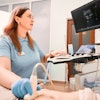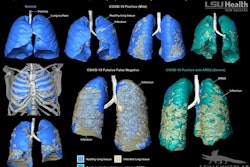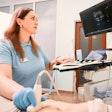Dear Digital X-Ray Insider,
A review in April identified more than 460 articles on artificial intelligence (AI) and lung imaging in COVID-19 diagnosis and management, with about 50% of the research involving x-ray -- and there have been more since.
In one such study, researchers from Hong Kong proposed a model in which AI analysis of chest x-rays and blood tests could offer an alternative to reverse transcription polymerase chain reaction (RT-PCR) tests for SARS-CoV-2 infection in regions of the world where resources for identifying SARS-CoV-2 may be scarce. Read more in this edition's Insider Exclusive.
Plus, here are a few other stories we've covered on x-ray imaging and COVID-19:
- The COVID-19 pandemic has caused anxiety and workplace-related stress among radiologic technologists.
- An AI algorithm may help physicians determine which COVID-19 patients will likely need hospitalization and supplemental oxygen.
AI is showing its utility beyond helping to fight the COVID-19 pandemic, as well, as we highlighted in the articles listed below:
- An AI program has shown it's possible for chest x-rays to detect unsuspected coronary artery diseases.
- An algorithm could help prevent missed appointments that impact patient care and result in a significant revenue shortfall for radiology departments.
- AI can be used to identify forgotten inferior vena cava filters on radiography exams, according to University of California, San Francisco researchers.
Dual-energy x-ray absorptiometry (DEXA) showed its versatility in measuring bone mineral density in both younger and older patients, as described in the following reports:
- DEXA scans showed boys have lower bone density than girls in a group of Thai teenagers with diabetes.
- Older adults living closer to city green space in Hong Kong unexpectedly showed lower bone density levels on DEXA in a study by environmental researchers.
In addition, while x-ray imaging may be the oldest modality in radiology, researchers are still finding ways to improve it, as shown by the coverage below:
- A simple technique that provides three-point support for scoliosis patients during slot-scanning digital radiography can help evaluate them prior to spinal fusion surgery.
- U.S. National Institutes of Health researchers have developed a small, 3D-printable device for portable chest x-ray systems that improves estimates of head-of-bed angle.
Finally, given the above, it may be hard to imagine that x-ray may be vanishing from urgent care centers, yet that is the perspective of one national expert in urgent care and occupational medicine strategy.
Be sure to check back often for more news in your Digital X-Ray Community!




















